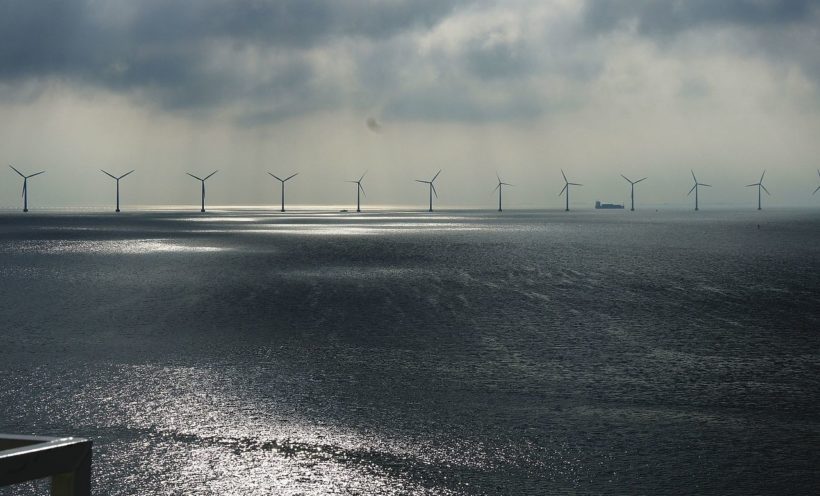Since deregulation and privatization of energy markets, companies operating within the sector have observed dramatic changes in their surroundings.
This has resulted in a paradigm shift, from focusing on the internal environment to the external. Stakeholders and customers are more empowered than ever, and it is changing the way utilities carry out their business.
Consequently, this new paradigm has prompted energy companies to come up with new innovative business models. This begs the question: Should energy companies reconsider their brand when restructuring their way of business?
The Role of a Brand
To find the answer to the question, energy companies need to understand the value of a strong brand and they need to understand how to create that value.
Unfortunately, branding is not perceived as important as it really is. This is a grave mistake. Well crafted brands help consumers simplify the complexity around the energy industry, inspire loyalty and establish trust. Further, branding is the compass for employees and management that strengthens focus on a strategic vision.
But how can you brand electricity?
The short answer is: to acknowledge that branding is an integral part of your business and that every organization is involved in branding whether it is voluntarily or involuntarily. By differentiating, at the source, service level, or anywhere in between, you create a brand which must then be integrated with the entire organization and its culture.

Image credit: LarsEn Energy Branding
Branding Is the New Energy Paradigm
Historically, energy companies were not particularly concerned with branding initiatives and thus neither did they make any certain amends to integrate it throughout the organisational chart.
A simple logo, colour guidelines and a catchy tagline were deemed adequate and customer communication and other outreach programmes were siloed off in the marketing department without influencing the rest of the organisation in a sufficient manner.
That has started to change. Following the paradigm shift, energy companies began noticing gaps between what they stood for before and what they wanted to stand for. There was also a gap between what they thought they were and what consumers perceived them as. They were missing the key ingredient: A strong, well-rounded, brand.
Luckily, energy companies have realized this and many have invested capital and human resources into using branding as a tool to bridge the gaps between the old ways of the sector and the new customer-centered business environment.
A Strong Brand Is a Simple Solution for a Complex World
In recent years, we have seen multiple cases of energy companies making attempts to close the gap, from minimal brand reinventions to comprehensive corporate rebranding initiatives. The extent of modification needed varies on many factors such as the market environment, company size, geographical reach and so on.

In the most basic terms, we have seen companies broaden the scope of their marketing communication while simultaneously focusing more on specific segments rather than the mass. For example, we see challenger brands utilizing new technology to help their consumers with every decision they have to make related to energy consumption, thus, taking on the role of an educator rather than a sole energy provider.
One such company is the UK based Bulb. They realized the complexity of the market place to the average consumer and acknowledged that in today’s society there is more to a product than the pricetag, even if that product is a mere commodity.
Bulb was able to utilize that to create a campaign focused on the promise of simplicity and renewable energy sources. But they didn’t stop there. Bulb’s holistic communications approach lives and breathes that same message, it can be easily spotted throughout every consumer touchpoint.

Source: The Challenger Project
This approach is obviously working for the UK based challenger. The company is currently servicing 300.000 household and has seen its value multiply 351 times since the company was founded in 2015.
Similar initiatives are prominent with the more established energy companies. In an industry that has been considered to be boring ,and in some cases even evil, companies are countering that perception by introducing emotions into their brands in an effort to connect to consumers on a more sentimental level.
To put it into perspective, consider this commercial from GE aired in 2002.
Here General Electric itself is at the centre, representing the old paradigm. Notice how many times the words “We” and “Our” are used without any reference to the consumer.
Now compare that to this commercial which was aired in 2017.
“It doesn’t matter to him that we power a third of the planet”. This sentence reflects the paradigm shift perfectly. While still keeping the company prominent, the focus is on the customer and his or her values. By doing so, GE creates a lasting impression on the consumer that invokes emotion.
In the last ten years, the energy sector has been slowly finding its feet in a new and a changed world. For branding in the sector – the teen’s is a fitting name for the decade. Brands have been trying new things and the sector at large has been trying to find its identity again. In the next ten years we will see how the market will finally reach maturity and we will see indications on how the sector will progress throughout the rest of the century.
Editor’s note: this article originally appeared on the CHARGE blog
Save the date! Leaders in Energy will be participating in CHARGE, the knowledge and networking platform for energy brands, in Iceland this September 30th and October 1st. Members of our community who are interested in attending can use the coupon code “FIFTEEN4CHARGE” to get 15% off. More information about the conference can be found here.



Leave a Reply